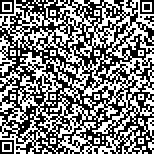| 摘要: |
| 近年来,环境DNA(environmental DNA,eDNA)技术开始被广泛应用于水生生物多样性研究。本文通过绝对定量和高通量测序技术对舟山近海高浊度水样eDNA的保存方法进行了建立和优化。研究结果如下:(1)"酒精+低温"保存法的eDNA获得量是"酒精+常温"保存法的0.78-1.06(7d)、0.89-1.80(15d)、1.05-2.75(30d)和2.69(60d)倍;(2)酒精保存法(低温、常温)存在eDNA富集物渗漏及滤膜黏附现象;(3)短期内冷冻保存样品的eDNA获得量是酒精保存样品获得量的1.25-1.59倍(7d)和1.07-1.20倍(15d);(4)酒精保存法的eDNA降解速率慢于冷冻保存法,长期内酒精保存样品的eDNA获得量是冷冻保存样品获得量的1.99-2.10倍(30d)和2.84-7.64倍(60d);(5)二次富集(过滤)能显著提高eDNA获得量,富集组eDNA浓度是未富集组浓度的1.60-4.95倍("酒精+低温" )和1.21-2.04倍("酒精+常温" );(6)"酒精+低温"保存的样品在高通量测序总丰度、各鱼种分丰度、物种多样性指数等多个方面优于冷冻保存样品;(7)微生物(micro-organism)的eDNA降解速率慢于大生物(macro-organism),不同界(Kingdom)的eDNA最优保存方法可能并不相同。本研究首次建立了舟山近海高浊度水样eDNA最适保存方法,为相似水域的eDNA保存提供了借鉴参考。 |
| 关键词: 舟山近海 eDNA保存 “酒精+低温” 二次过滤 |
| DOI:10.11693/hyhz20190200034 |
| 分类号:S931.4 |
| 基金项目:国家自然科学基金项目,41776171号,41806180号;国家自然科学基金委2018年度东海春季共享航次,NORC2018-02号。 |
|
| ESTABLISHMENT AND OPTIMIZATION OF THE EDNA PRESERVATION METHOD FOR ZHOUSHAN COASTAL WATERS |
|
CHEN Zhi1, CHEN Jian-Wei2, WANG Xiao-Yan3, GAO Tian-Xiang4, LIU Yan5
|
|
1.College of Fisheries and Life Science, Hainan Tropical Ocean University, Sanya 572022, China;2.BGI-Qingdao, BGI-Shenzhen, Qingdao 266555, China;3.National Engineering Research Center of Marine Facilities Aquaculture, Zhejiang Ocean University, Zhoushan 316022, China;4.Fisheries College, Zhejiang Ocean University, Zhoushan 316022, China;5.South China Sea Fisheries Research Institute, Chinese Academy of Fishery Sciences, Guangzhou 510300, China
|
| Abstract: |
| In recent years, environmental DNA (eDNA) has been widely used in the research of aquatic biodiversity. We use absolute quantification and high-throughput sequencing to establish and optimize the preservation methods of eDNA for Zhoushan coastal waters. Three eDNA preservation methods were tested and compared, including freeze at -20℃, in alcohol at room temperature, and in alcohol at -20℃. The results show that the yield of preservation in alcohol at -20℃ was 0.78-1.06 (7d), 0.89-1.80 (15d), 1.05-2.75 (30d), and 2.69 (60d) times higher than that of preservation in alcohol at room temperature. However, both alcohol methods have problems of eDNA enrichment material leaking and filter membrane adhesion. The yield of freeze at -20℃ in short term was 1.25-1.59 (7d) and 1.07-1.20 (15d) times higher than that in alcohol. The degradation rate of eDNA in alcohol was lower than that in freeze. The yield of samples preserved in alcohol was 1.99-2.10 times (30d) and 2.84-7.64 (60d) times higher than that of samples preserved in freeze. In addition, the yield of eDNA was significantly increased by secondary filtration. The concentration of enriched group increased the yield to 1.60-4.95 (alcohol at -20℃) and 1.21-2.04 (alcohol at room temperature) times higher than that of unenriched group. We find that samples preserved in cold alcohol were better than those preserved with freeze in many aspects, including the total tags of high-throughput sequencing, the abundance of fish species, and the diversity index. The eDNA degradation rate of a micro-organism is slower than that of macro-organism. The optimal preservation methods of animals of a different kingdom might be different. The optimal preservation for eDNA collected from Zhoushan coastal waters was established first time, which provided a reference for eDNA preservation in similar water region. |
| Key words: coastal waters of Zhoushan preservation method of eDNA cold alcohol secondary filtration |
